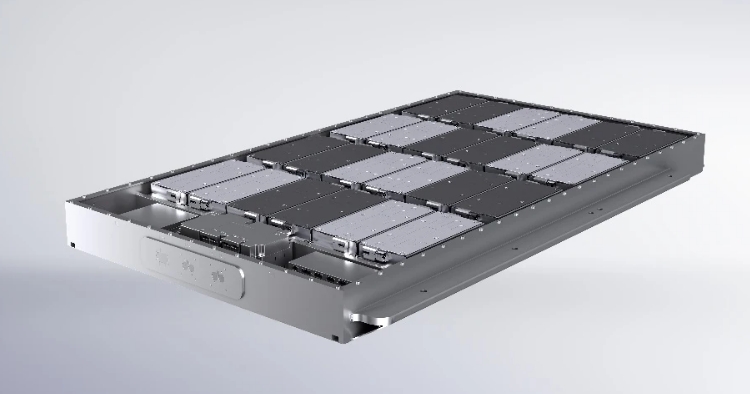new blog

Battery is one of the most important core components of electric vehicles, whether it is in the face of high temperature, wading and even impact, the safety of battery protection can not be ignored. To protect the safety of the battery, the battery shell is the most important thing.
Since the battery is the core key component of electric vehicles, electric vehicle researchers have focused their attention on the battery of electric vehicles and searched for the ideal material to protect the battery. Steel is the most economical and sustainable battery housing material for mass production.
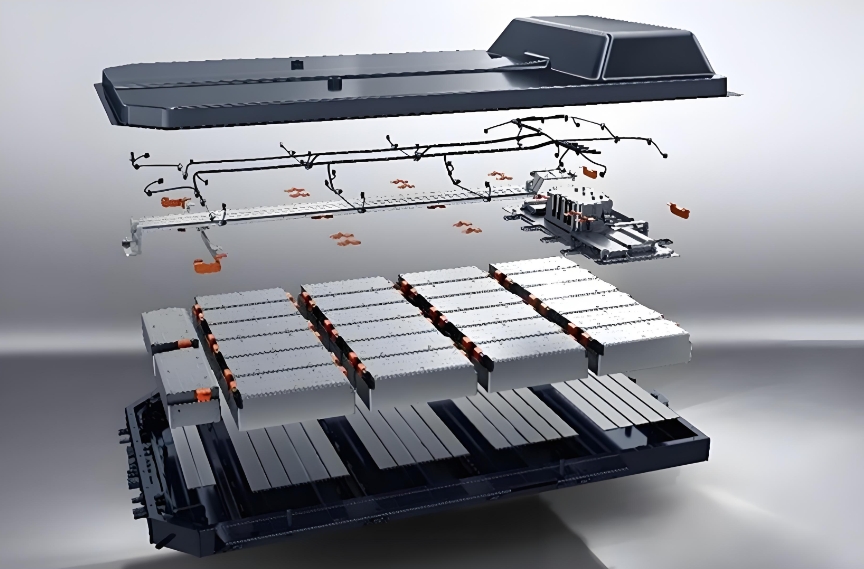
How does the battery housing protect? & What conditions must the battery case meet?
The battery housing is an essential part of an electric vehicle, housing high-voltage batteries, electronics, sensors and connectors to help protect the overall structure and safety of the vehicle and protect critical components from potential external shocks, heat and water seepage.
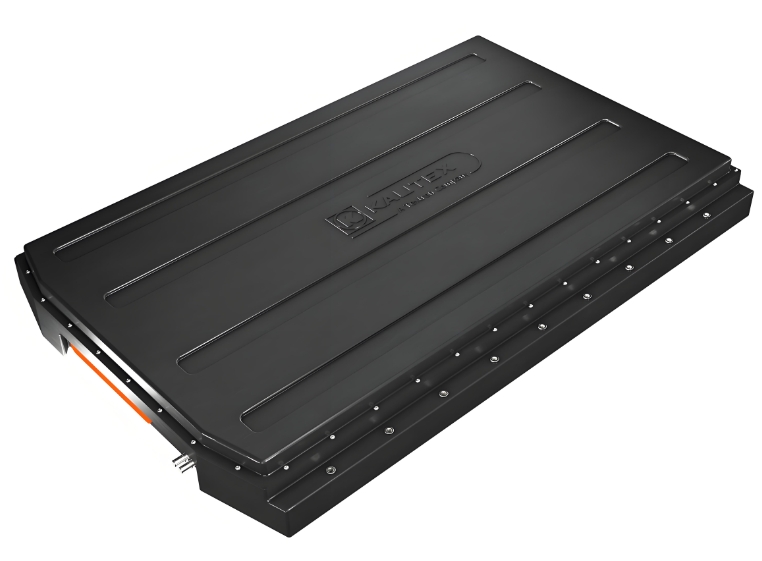
The battery housing of pure electric vehicles is relatively large, generally about two meters long and about one meter wide. It is technically challenging to ensure that such a large product is waterproof and airtight.
On the one hand, leakage prevention technology is required in product design and manufacturing process, and on the other hand, each battery box product must pass strict air tightness detection before rolling off the line.
At the same time, the main task of the battery shell is to protect the battery module. They are the interface between the drive system and the structural elements and are therefore one of the most important components in an electric vehicle.
To ensure effective protection, it must be stable enough to protect the battery module from damage in the event of an accident. The built-in cooling system also prevents the battery module from overheating.
Finally, despite environmental impacts, the battery housing must be extremely resistant to corrosion in order to protect the battery from normal use for many years.
It is worth mentioning that due to the short charging time of electric vehicles, large current intensity and high frequency of use, the battery housing material is required to have certain high temperature resistance and aging resistance while ensuring good insulation, and has halogen-free flame retardant and low smoke density when burning.
Analysis of the manufacturing process and value of thermoplastic and reinforced plastic materials on electric vehicle battery housing boxes
Compared to metal components, large all-plastic enclosures can both reduce cycle times and help reduce vehicle weight, which can increase the range of electric vehicles (EVs).
Lanxess and Kautex Textron have spent several years collaborating on whether battery casings for electric vehicles can be designed and manufactured from engineered thermoplastics.
Using a direct long-fiber thermoplastic (D-LFT) and polyamide 6 (PA6) resin, they developed a technology demonstrator in a feasibility study.
The study system measures 1,400 by 1,400 mm (length by width) and is a large, complex, all-plastic housing weighing in the double-digit kilogram range.
The goal of the research project was to demonstrate the advantages of thermoplastics over metals in terms of weight and cost reduction, functional integration and electrical insulation properties.
"As a first step, we have moved away from the use of metal reinforcement structures and have demonstrated that we can commercially produce these complex and large components," explains FelixHaas, Director of Product development at Coster.
Dr. ChristopherHoefs, Project Manager of LANXess Electronic Powertrains, added: "Costa and LANXESS hope to use the results of their collaboration to enter into serial production research and development projects with car manufacturers."
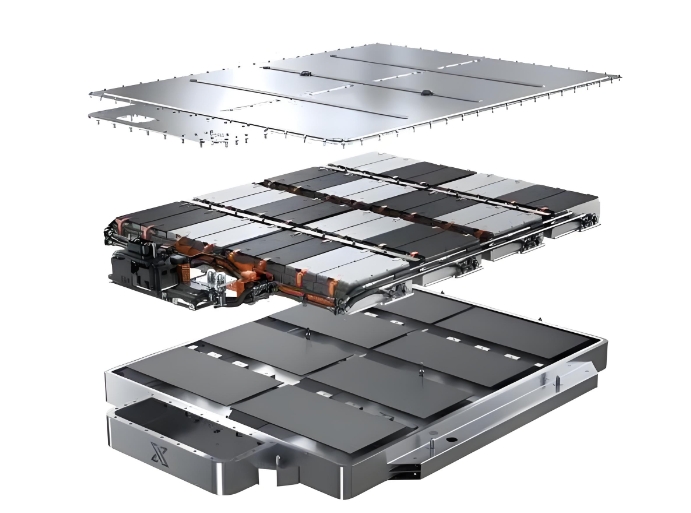
Single-stage manufacturing process: The demonstrator is based on the battery housing on the C-segment electric vehicle. It is composed of a shell tray with an anti-collision structure, a shell cover and a car bottom protection device.
The housing components are produced using a single-stage D-LFT molding process, while LANXESS optimised Duresan B24CMH2.0 polyamide 6 (PA6) as the molding plastic.
Koster mixes PA6 with fiberglass roving for the process. The shell structure is partially reinforced using Tepex dynalite fibre-reinforced thermoplastic composites from LANXess.
"This process can shorten the cycle time, so it is more economical than the process time in steel or aluminum," Haas explained.
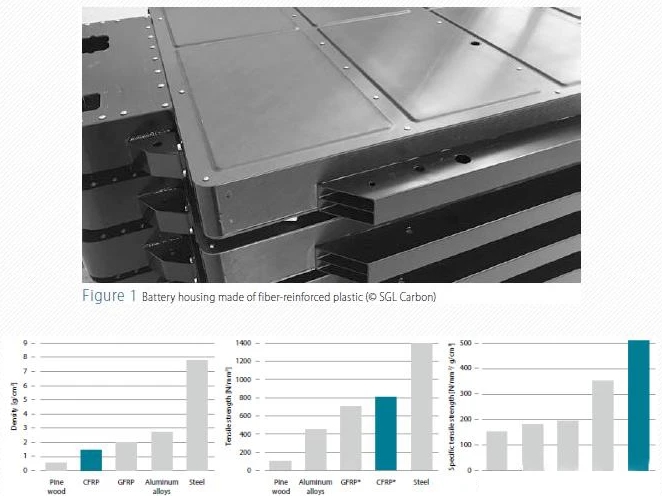
According to the information, the verification is based on the development of the battery housing on the C-segment electric vehicle. It is composed of a shell tray with an anti-collision structure, a shell cover and a car bottom protection device.
Today, the casings of high-voltage batteries are originally made of extruded steel or aluminum.
Depending on the vehicle class, the housing can exceed 2,000 mm in length and 1,500 mm in width. The size, number of parts, and numerous manufacturing and assembly steps make metal casings very expensive.
For example, complex structures made from steel strand profiles require many auxiliary operations, such as welding, drilling, fixing, etc.
In addition, in an additional process step, metal parts must be protected from corrosion by cathodic dip coating.
Simplify assembly and logistics: "Plastics, on the other hand, can be fully engineered," says Hoefs. By integrating fasteners and thermal management components, the number of individual components in the battery housing can be greatly reduced. Simplifies assembly and logistics, thereby reducing costs."
Plastics also have corrosion resistance and insulation. For example, plastics can reduce the risk of short circuits in the system. The low density and lightweight structure of plastic can reduce the weight of the shell, which is conducive to increasing the driving range of electric vehicles.
High voltage battery housings must be highly adaptable to various needs. For example, it must be hard and strong enough to absorb a lot of energy in the event of a collision. This is tested by mechanical impact and extrusion tests. In the event that the car catches fire or hits the battery thermal runaway, the housing must be flame retardant. Ultimately, the shell must be integrated into the vehicle structure.
Hoefs said: "We will continue to work on optimizing component production and structural design. Our goal is to work virtually, save costs in prototype trials and reduce time to market for future family components."
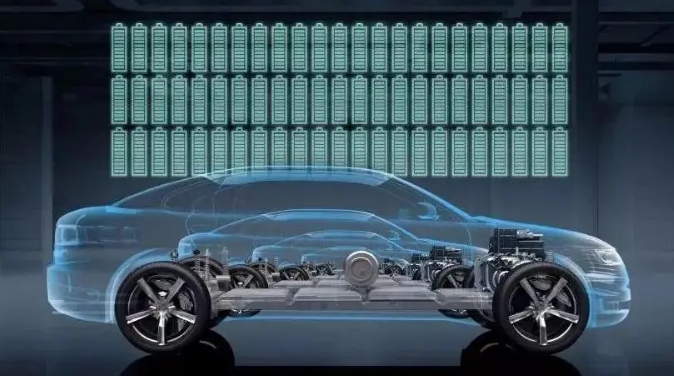
At the same time, in recent years, reinforced plastic in the car battery box is also a super high concern, such as SGLCarbon and Chinese car manufacturer NIO cooperation to develop composite battery box this matter can be illustrated, SGLCarbon (Wiesbaden, Germany) announced that it has partnered with Chinese car manufacturer NIO, Developing carbon fiber-reinforced plastic (CFRP) prototype battery housings for electric vehicles.
The CFK battery case is said to be 40% lighter than a conventional aluminum or steel battery case, and has high rigidity and approximately 200 times thermal conductivity compared to aluminum. "In addition, composites offer the best value in terms of water and air tightness and corrosion resistance," said SebastianGrasser, Automotive Market Division Manager, SGL Composites - Fibers and Materials Business Unit. The bottom and lid include a sandwich core and several layers of carbon gel.
The tool design for the production of the floor and cover was developed at SGL's Lightweight and Application Center, and the carbon fiber for these parts is produced at SGL's facilities in MosesLake, WA, USA, and Muir, Ord, UK. Processed into thin pine in Waxdorf, Germany.
SGL's factory in Riedim Innkreis, Austria, carries out the production of floors and covers and the assembly of individual components. The battery case is said to be particularly light, stable and safe.
The entire battery case, including the battery, can also be replaced within three minutes at NIO's own switching station, according to the report.
SGL Carbon expects the demand for lightweight solutions for battery boxes in the automotive industry to increase dramatically over the next few years with the increase in electric vehicles.
The company is already working with various partners to further develop different battery boxes made of composite materials that can be expanded to electric vehicle batteries of various sizes and designs in the future.
"Lightweight construction is one of the core elements of NIO's technology roadmap."
Using composite materials, especially high performance carbon fiber in the battery box system, our vehicles offer better dynamic drive performance, longer range and very high energy density battery packs (over 180Wh/kg).
These features fit well with NIO brand values such as ultimate product and system efficiency.
Development and verification analysis of high performance composite battery pack housing

To meet more stringent emissions regulations, car manufacturers are working to develop power drive systems that can be produced at scale.
Pure electric, hybrid, plug-in hybrid, fuel cell and other vehicle types will play an increasingly important role in the future automotive market.
However, the range of electric vehicles has not yet reached the standard of gasoline or diesel cars.
There are generally two ways to increase the battery life of electric vehicles: one is to install a large-capacity energy storage system, but this will increase the weight of the vehicle; The other is to choose a high energy density energy storage material, but the current energy density of the battery can not meet the application needs.
In addition, improving the overall efficiency of the vehicle is an effective way to reduce fuel consumption. In addition to the above optimization measures in the powertrain, it is also necessary to reduce the driving resistance by reducing weight, so as to achieve energy saving and emission reduction.
Therefore, lightweight is not only the demand for fuel vehicles, but also very important for electric vehicles.
In general, a weight reduction of 100 kg can reduce CO2 emissions by about 10 g/km and fuel consumption by up to 0.45 l /100 km.
For electric vehicles, the lightweight of the battery pack housing can not only make the car run efficiently, but also provide greater battery life.
But the battery pack housing needs to be designed to be as reliable and safe as possible while being lightweight.
This requires consideration of many factors such as fire safety, rigidity, thermal management, electromagnetic compatibility and corrosion resistance.
1. Modular design of composite battery pack housing
At present, the battery pack housing of electric vehicles is mainly made of aluminum and steel.
In comparison, the composite battery case developed by SGLCarbon, shown here, can achieve a 40 percent weight reduction, and its related mechanical properties are as follows.
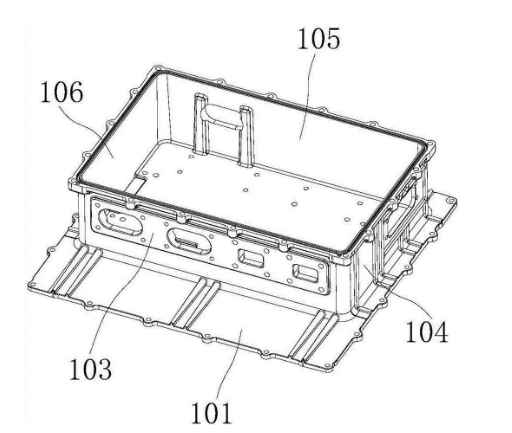
The design of the bottom plate and top cover of the battery pack housing has a great influence on the performance of the housing.
Composite battery shell generally adopts sandwich structure design: PET, EPDM, aluminum foam and other similar core layer materials are used, combined with multi-layer carbon fiber or glass fiber fabric composite materials, and the rapid curing resin material is molded.
Among them, the form of fabric can be axial fabric, woven fabric, or non-woven fabric, etc., as shown below. The process flow from fiber to prepreg to finished product is shown in the figure below.

At the same time, materials can be flexibly combined with each other to match the corresponding application needs. In particular, the textile layer positioned along the fiber stretching direction has a good quality and can be easily applied to the design of components.
Therefore, through the fiber or fabric layering direction design can achieve different requirements of the force, so as to effectively use the material.
2. The performance requirements of electric vehicle battery pack housing are as follows
Mechanical properties:
The stiffness of the battery pack housing is particularly important. In most electric vehicles, the battery pack housing is an important part of the vehicle structure, and its performance plays an important role in the overall stiffness of the white body. This requires the battery pack housing to meet the safety requirements of forward and side impact.
As shown in the figure, the rigidity of the battery pack housing largely depends on the sandwich structure used, and aluminum foam material is generally used as the sandwich layer material.
In addition, the high specific stiffness, low weight and good damping characteristics of fiber reinforced components also have a positive impact on the noise, vibration and NVH performance of the vehicle.
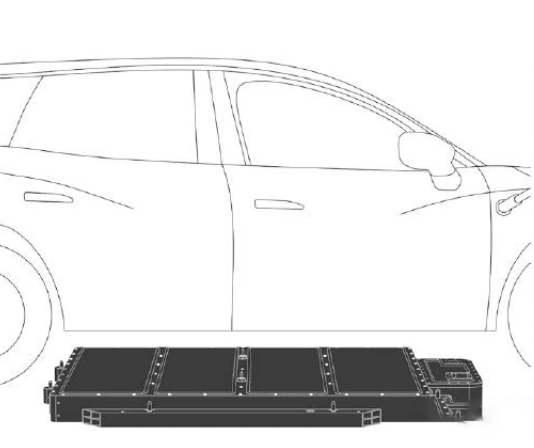
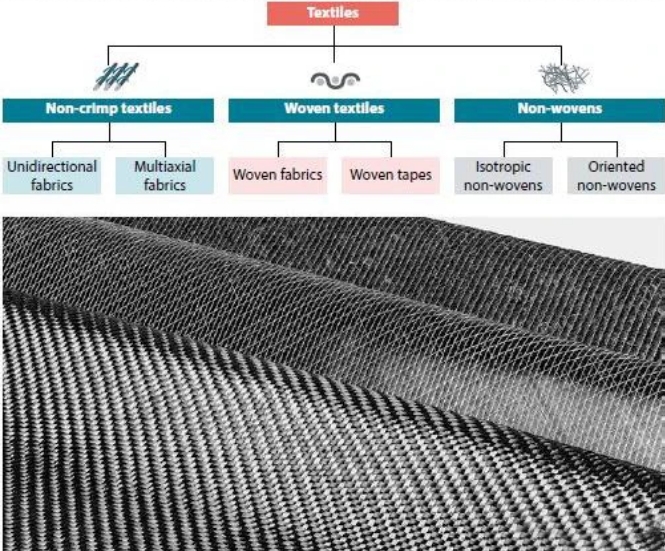
Thermal management and flame retardant:
Another advantage of the composite battery pack housing is that the thermal conductivity of the carbon fiber reinforced composite material is 200 times lower than that of the aluminum alloy, and it has better insulation, so the composite battery pack housing can better resist high and low temperature performance than the traditional metal housing.
The ideal operating temperature of lithium-ion batteries currently in common use is between 10 and 40°C, which generally requires the addition of a cold/thermal management system.
The composite housing has better insulation and requires less energy in hot conditions, further improving the efficiency of the vehicle and reducing the total power consumption.
In addition to its positive effect on thermal management, low thermal conductivity is also an excellent prerequisite for effective flame retardancy.
By adding flame retardants, the composite shell can easily meet the flame retardant requirements such as UL94-V-0 and UL94-5VB.
The researchers conducted a comparative test of the sample panel materials: exposing the sample to a flame just a few centimeters away from 800 ° C, and measuring the temperature on the other side.
Since the aluminum alloy reaches the melting point at a temperature of about 660 ° C, steel plates, standard thermosetting resin composites and the above sandwich composite samples with flame retardants were selected for testing, and the results are shown in the figure.
The temperature on the other side is: steel: about 750°C after 30 seconds, standard thermosetting resin epoxy composite: about 550°C after 60 seconds, sandwich structural material with added flame retardants: about 350°C after 180s.
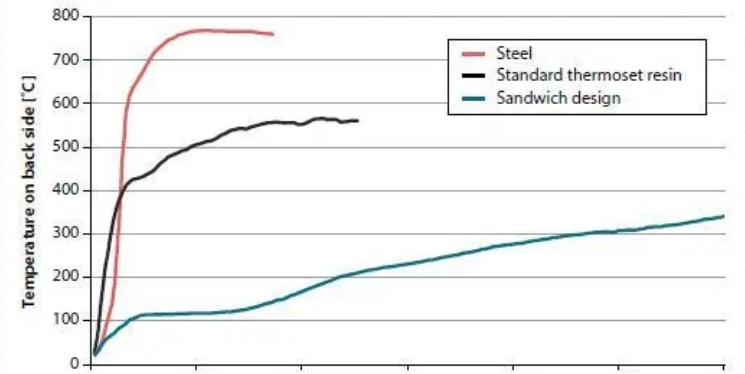
The above results show that the sandwich structure composite battery pack housing has excellent flame retardant properties. At the same time, the material also has self-extinguishing, which can prevent the occurrence of fire.
And because of the low thermal conductivity, in the event of a fire, the composite shell can only transfer the high heat generated by the battery combustion to the adjacent parts and the crew cabin, which will win valuable time for the crew to escape.
Other properties:
In addition, the sandwich battery pack housing developed by SGL Carbon can also better meet corrosion protection requirements, providing better sealing.
Electromagnetic shielding of critical areas can be achieved through the design of fiber layering and fiber volume content.
At the same time, the application of composite materials provides more space for integrated design, related enhancement components, additional components, connecting components, sensors, etc., can be integrated design.
